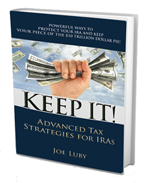What Is Your Non-Listed REIT Really Worth?
Categories: Retirement StrategiesNon-listed REITs are hugely popular investments with individual investors and their advisors…and usually with good reason. They tend to produce high streams of income and allow access to large commercial real estate portfolios for relatively low minimum investments. The typical investor cannot achieve this type of diversification investing directly into shopping centers, large office buildings and other high end real estate deals.
However, additional and exciting opportunities are available to owners of non-listed REIT shares. These opportunities present themselves when the fair market value (FMV) of the REIT shares is less than the stated net asset value (NAV) of the shares. For example, non-listed REIT shares are typically priced at $10 during the initial offering period. Once the REIT is closed to new investors, the price per share reported by custodians can vary significantly. In many cases account statements continue to reflect the original cost basis price of $10. Other times, the REIT sponsor may provide updated NAV information based on performance and holdings in the fund.
It’s a little known fact (with a nod and wink to Cliff Clavin from Cheers) that often, the NAV reported on account statements is not the same as the FMV reported for tax purposes. Some custodians’ policies on determining proper FMV for reporting purposes require them to look beyond the figures reported by the REIT sponsor. In some cases the custodian may consider the fund’s redemption policy or secondary market transactions if data and transaction history is available. It is common sense that shares with no redemption rights trading on a secondary market for $6 are not properly valued at the original offering price of $10 and some custodians recognize this.
A recent review of one large custodian’s non-listed REIT valuation policies reflected the following discounts:
| REIT | Statement Price | IRS Reporting Price (1099R, 5498, etc.) | Discount |
| REIT 1 | $4.55 | $2.57 | -43% |
| REIT 2 | $7.66 | $3.14 | -59% |
| REIT 3 | $8.03 | $6.02 | -25% |
| REIT 4 | $6.85 | $4.93 | -28% |
| REIT 5 | $7.32 | $5.70 | -22% |
| Average Discount | -35% |
In each case the tax reporting value was obtained by reviewing secondary market transaction data rather than using the value reported by the REIT sponsor.
How many clients hold non-listed REIT shares in their IRA? A Roth conversion may not look attractive based on the statement price/value of the account, but may become very attractive at the tax reporting price/value discounted by thirty-five percent. Consider an IRA holding shares of REIT 1 shown above with a $100,000 statement value (NAV). The actual value that will be reported for tax purposes on the 1099R for his Roth conversion is only $57,000. That Roth conversion looks a lot more attractive at $57,000 than at $100,000.
The Roth conversion is only one example. Advisors and investors should also consider opportunities in the gift and estate tax planning realm. Proper valuation of assets clients already hold such as non-listed REITs can provide the same type of tax benefits normally associated with family limited partnerships and other closely held business interests.
Stay tuned for our upcoming webinar series with cutting edge topics and speakers! Schedule and topics to be announced the first week of August.
And get ready for my new book, KEEP IT! Advanced Tax Strategies for IRAs, coming soon! The book reviews strategies such as the one above in more detail and shows how to use proper valuation of assets to save huge amounts of tax on IRAs.
© 2011 Jagen™ Investments, LLC

